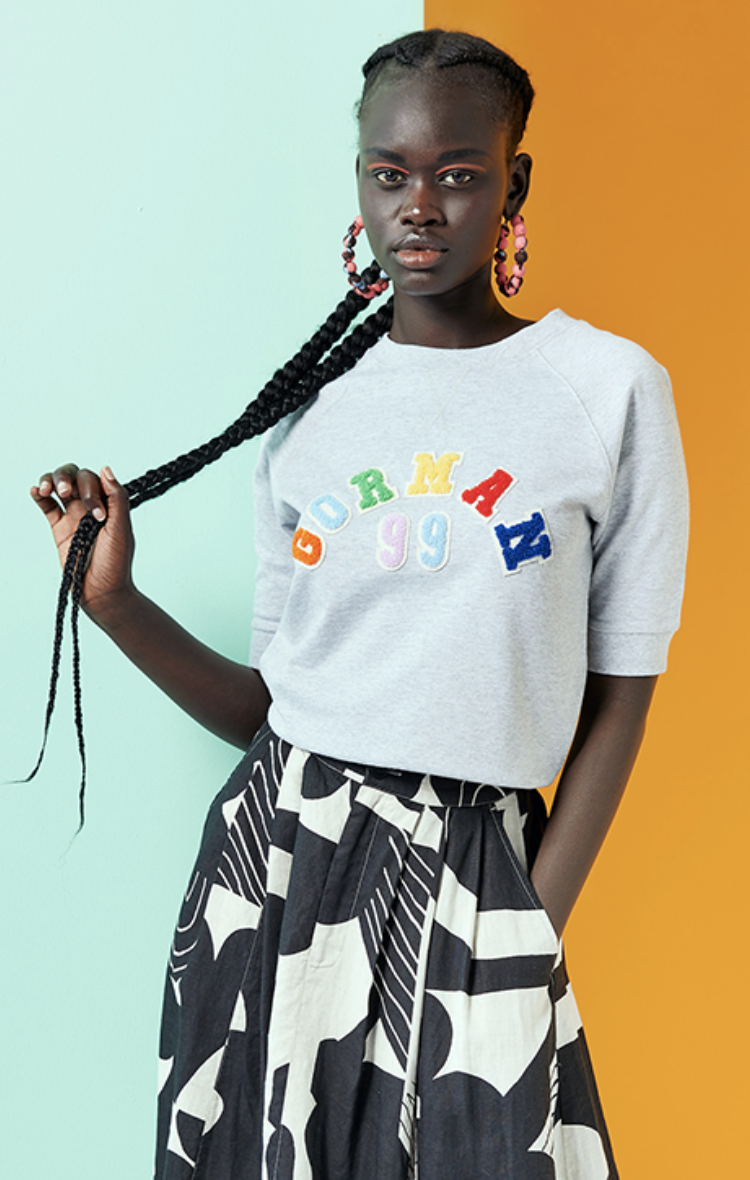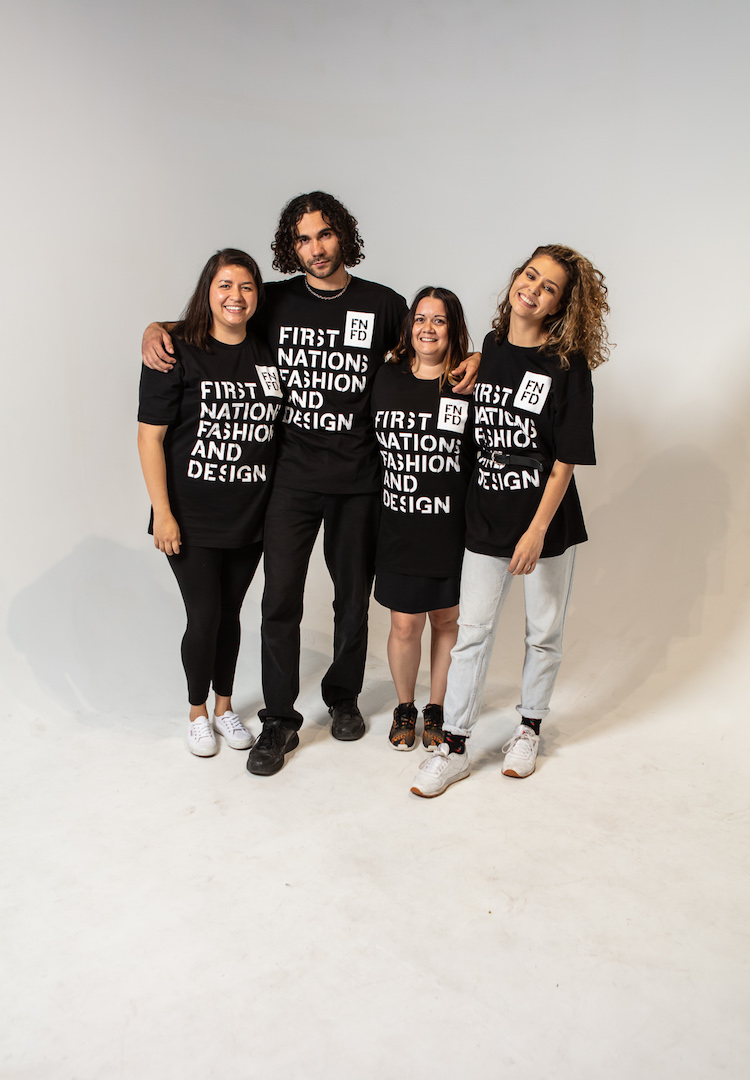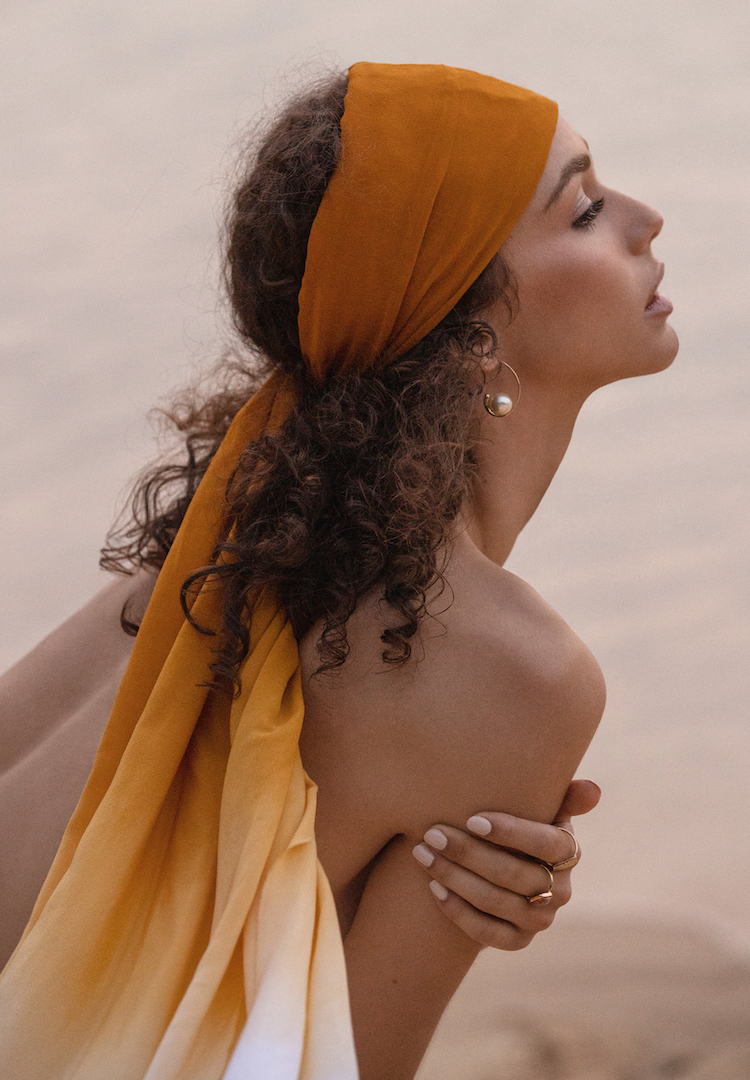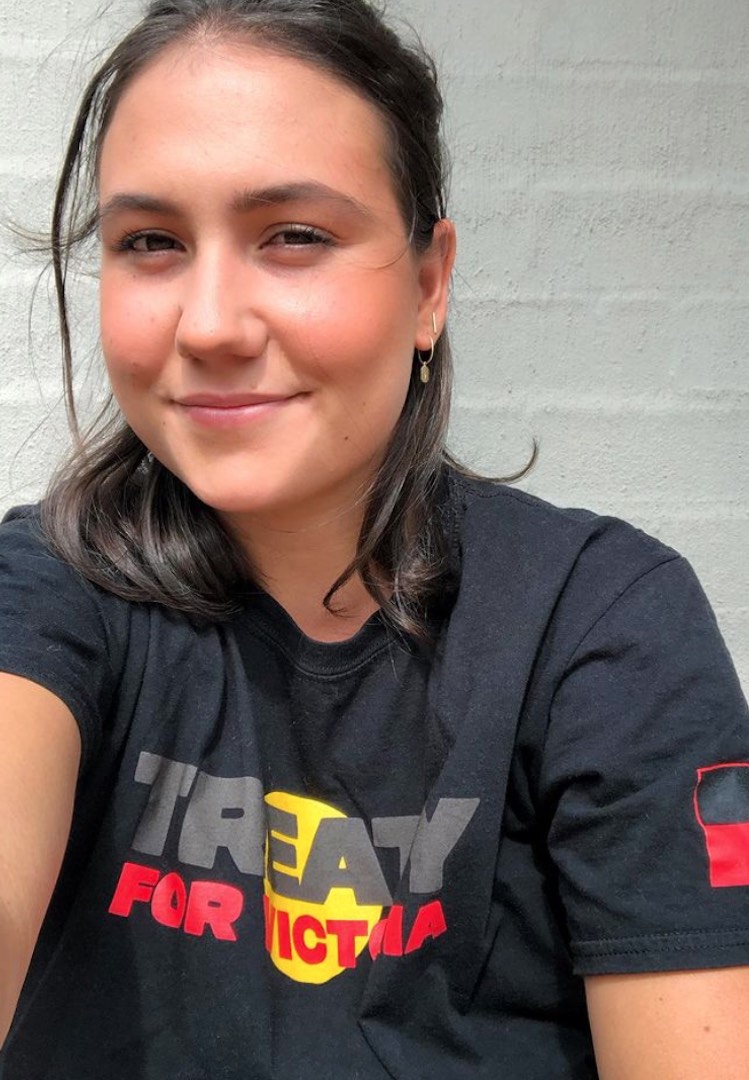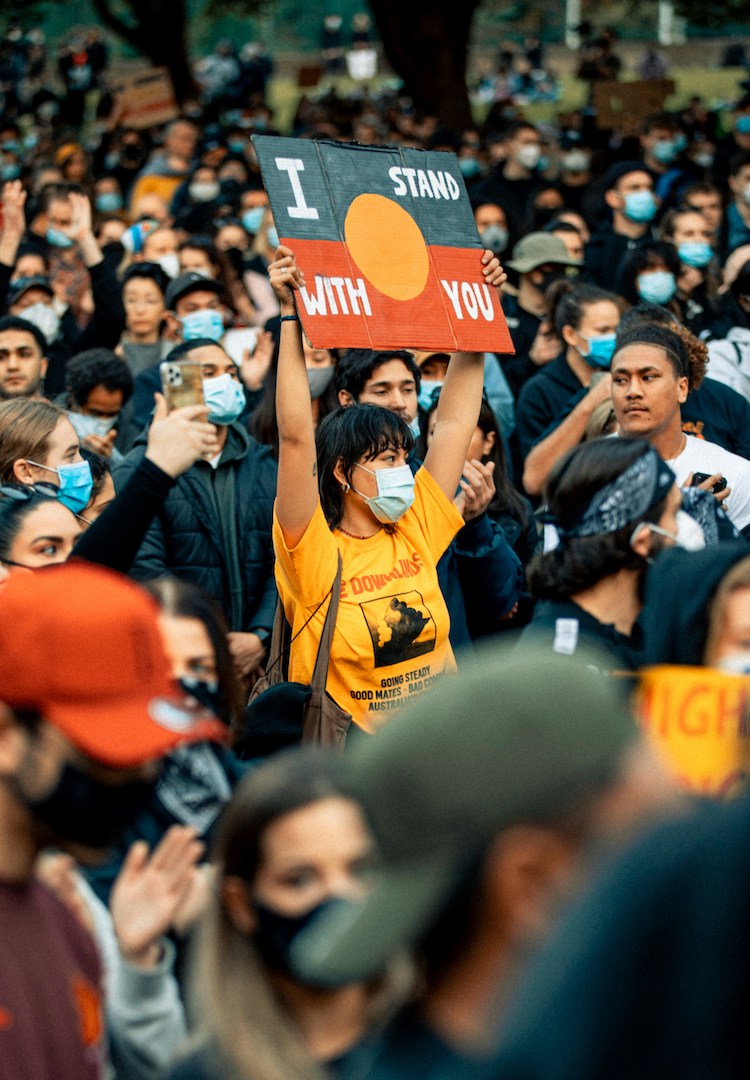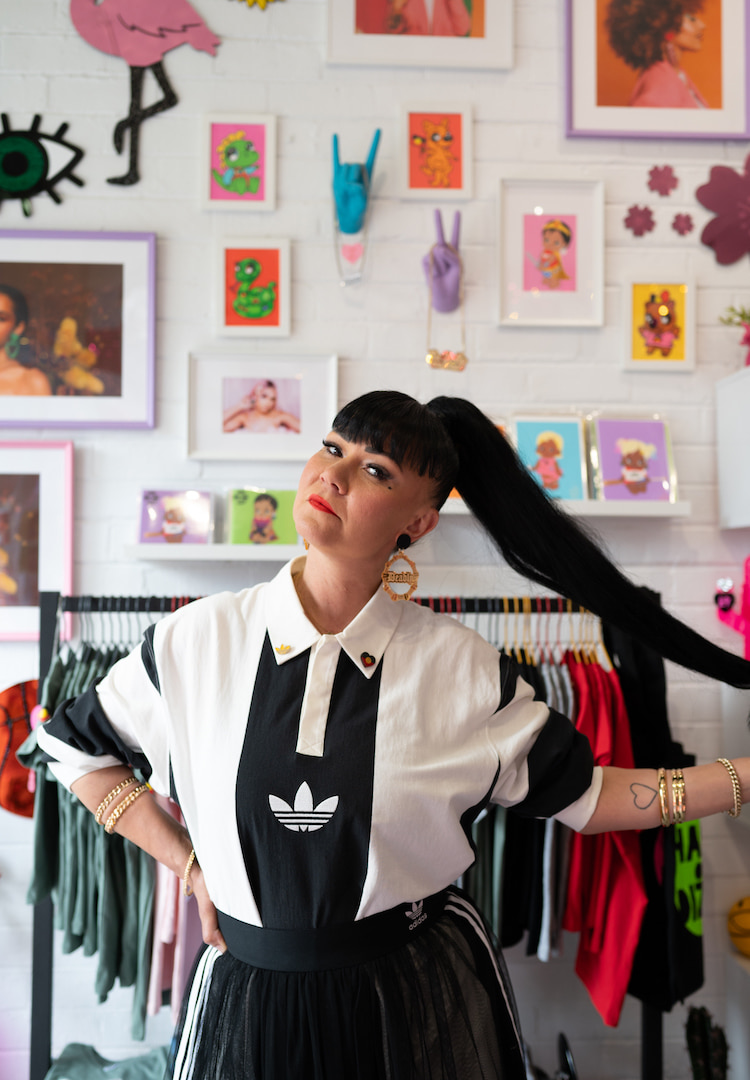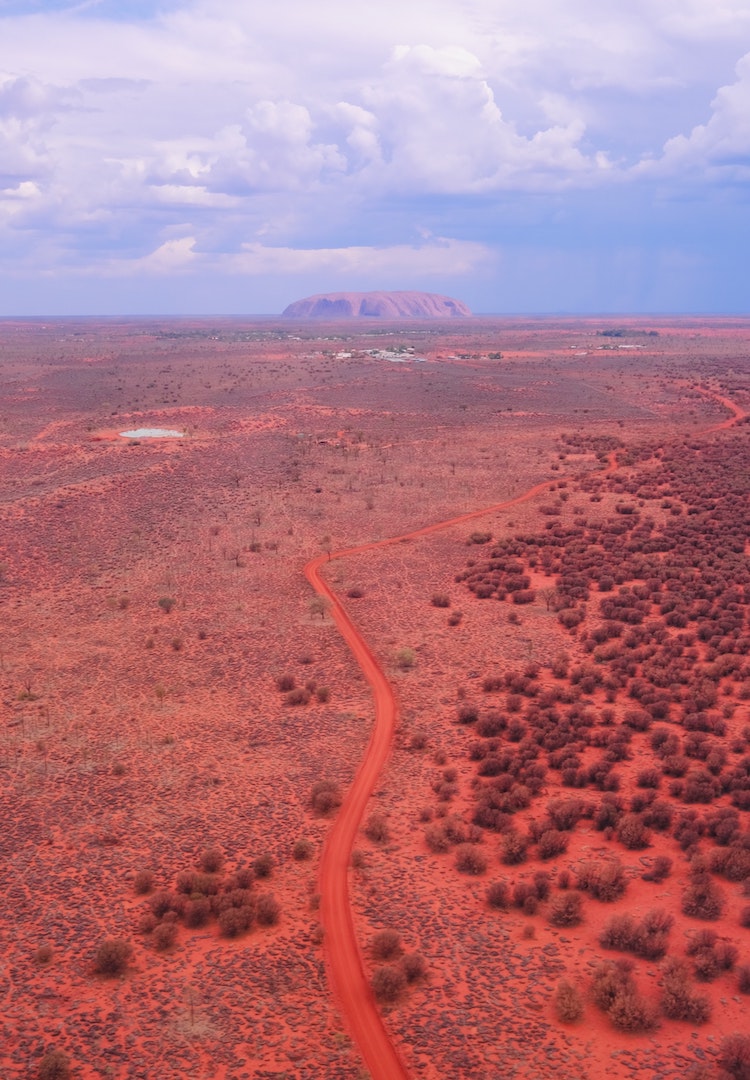The founders of the First Nations Fashion council on their experiences in the fashion industry
Image via First Nations Fashion and Design
This is the future of the Australian fashion industry.
This week we welcome a guest editor to Fashion Journal, Rona Glynn-McDonald. Rona is the founder of Common Ground, a not-for-profit organisation educating Australians on Aboriginal and Torres Strait Islander cultures. Rona is joining us for Reconciliation Week, which runs from May 27 to June 3. Read more about Common Ground and Rona’s work here.
We were so excited back in March when Teagan Jan ‘TJ’ Cowlishaw and Grace Lillian Lee formally announced the launch of the country’s first-ever First Nations Fashion Council, so we knew we had to get them together to talk all things First Nations Fashion and Design (FNFD) and their experiences within the fashion industry.
FNFD is a platform created to nurture and support Indigenous artists. It is a space committed to honouring the past by raising public awareness of Australia’s rich Indigenous heritage while creating a fresh space for continued dialogue and a tradition of ‘sharing’ on a national level.
The First Nations Fashion Council is an important first within the Australian fashion industry. Consisting of exclusively Aboriginal and Torres Strait Islander professionals and led by an all-Indigenous board, its purpose is to facilitate the growth of First Nations involvement within the fashion sector.
TJ, who is a Bardi woman and descendant of the Gypsy Pirates of Shanghai, runs her own sustainable streetwear label, Aarli, which upcycles textiles and deadstock to create its apparel lines.
Grace, whose roots come from the Meriam Mer peoples of the Eastern Islands of the Torres Strait, creates wearable art and accessories using traditional Torres Strait weaving techniques.
Teagan Jan Cowlishaw: Hello Fashion Journal Community. For those of you who don’t know me, my name is Teagan Jan Cowlishaw and I’m a First Nations fashion designer and founder of Aarli, an upcycled streetwear and apparel brand from Perth, WA. I’ve recently been asked to join the movement and become the national coordinator for First Nations Fashion and Design. On today’s mini yarn session with my sister Grace Lillian Lee, we would love to give you a little insight into what Grace and I have been working on.
TJ: So Grace, for Fashion Journal readers who don’t know who you are, can you give us a little intro on yourself?
Grace Lillian Lee: Sure. My name is Grace Lillian Lee, my background is in fashion and I explore my lineage through weaving. I’m a descendent of the Meriam Mer people of the Eastern Islands of the Torres Straits, and I like to celebrate my culture and my identity through something that’s wearable, and that’s what we’re talking about today.
TJ: Awesome. Too deadly sister. And Grace, when did we meet? I obviously know, but describe for all the Fashion Journal readers out there.
GL: So Teagan and I met through an organisation called the Australian Indigenous Fashion Week, which was established in 2012. The sector has been growing, and that’s been growing because of the interest that everyone has had to want to be able to connect and learn more about our culture. So between you and I, we’ve been talking for a long time. I guess we met in 2012 and we’ve both been working independently, but along the way, we’ve just been really good support for one another to be able to talk about our issues, constraints and successes over the time. I think that it’s part of the concept of what growing First Nations Fashion and Design is, and I think that collectively we notice that we’re stronger united rather than doing it independently. Especially coming from a very authentic place, it just seems a lot more holistic than coming from an industry that has no connections to our culture.
TJ: Yeah agreed. So for the FJ readers, who don’t know what FNFD is, or First Nations Fashion Design, can you give us a little introduction to what it is?
GL: I should have my elevator pitch perfected by now but…
TJ: Yeah, I know!
GL: I think it’s progressive, so it’s forever changing, but I think the core elements of what First Nations Fashion and Design is, is really about supporting and creating a stronger awareness about how diverse First Nations people are within Australia, but being able to use fashion as a platform to express ourselves and create more of a dialogue with non-Indigenous people. I think fashion is a really great soft entry to healing and for us to connect. I think if we can have allies that aren’t Aboriginal or Torres Strait Islanders to actually be able to invest and learn about our culture through wearing our textiles and storylines, it’s a really great way for us to heal collectively. First Nations Fashion and Design’s intention is to create some really cool platforms for the next generation, preserving techniques and stories, and bringing it into a more contemporary space. So there’s a lot going on.
TJ: Yeah, absolutely.
GL: I started the platform two years ago, supporting off my own business as well as Arts Queensland, which has been a huge supporter for me to further develop this, and now we’ve become an Indigenous organisation that’s a not-for-profit. We also have the first First Nations Fashion Council, which we’ll be announcing in September, who those five incredible Indigenous entrepreneurs that are playing within the fashion sector will be. They are going to work with Teagan and me to develop what we feel is a better future for Indigenous fashion within the mainstream fashion sector.
TJ: I feel our ancestors have reconnected for a reason, did you feel that both of us had a call to action to start our First Nations Fashion Council?
GL: Yeah of course! I think that the industry has no clear guidelines or policy written about Indigenous fashion and Indigenous intellectual property within the realms of fashion – it’s very different to art. I think that we’ve got to play this strange realm of staying connected and aware of our cultural integrity, as well as learning to play in a very Western colonial world of writing policy and planning for growing our future for the next generation. So I think that Teagan and I have definitely been brought together, I think together we’re a lot stronger than independently, and I love what you bring to FNFD. We have different passions in different areas and that makes us stronger.
TJ: Yeah, different strengths. So on that, it’s been nearly a decade now and I feel together we’ve experienced many highs and many lows plus all of the ups and downs of being fashion designers and entrepreneurs. What do you feel have been the real challenges in this industry? Where could the industry be improved? What outcomes are needed?
GL: It’s a strange world because I think the struggles are that it’s become such a hot topic and a trend at the moment, and so everyone wants a piece of it because they see it. It’s authentic, it’s sexy, it’s thriving, it’s helping the community and it’s engaging, so people want a piece of it. Unfortunately, all the help can sometimes be not the best approach. I think that yes, everyone wants to be a part of our Aboriginal and Torres Strait Islander culture but I think they need to be working with people like ourselves, or working with people that are already in the industry. I believe that this sector is going to be shaped and created completely differently because our whole dialogue is different from the fashion industry. It’s not fast, it’s slow, it’s about preservation, it’s cultural.
TJ: Authentic could be used as well.
GL: Yeah exactly right, so it’s very different. I think that’s the part that I’ve struggled with. Everyone wants to get on board and we really want the support, but we’re not here to run, this is going to be a marathon. It’s not just going to be a sprint, we’re going to get to the end and resolve all the issues. There have been hundreds of designers and creatives that are messaging Teagan and me on a month-to-month basis trying to ask questions that are very important questions about the sector, that we can’t answer. We need to still grow and connect and become more aware of what’s available for everyone. And to the point that it’s about legislation and legal issues, we’re not lawyers so we definitely need to be able to support mob with this kind of information, rather than us getting taking advantage of. Because it is such an exciting space, I think some people just think that they’re giving us an opportunity by taking our intellectual property and creating fashion, which isn’t the right way to go.
TJ: Yeah I totally agree. Ok, so I feel throughout this journey that we’ve both had to create our own opportunities within the industry. By doing this we’ve started a movement, that’s why I feel we’ve both done so well, and now we want to create other opportunities for our mob. FNFD is not just a project but a legacy for our people. This fashion initiative will be a gateway for the next generation of designers, so FNFD will provide access points for community and open national and international opportunities for economic development for our mob. Do you agree? You better!
GL: 100 per cent!
TJ: It would be weird if you said no!
GL: I forgot about mentioning economic development because that is totally what it’s about. I think that it’s about empowering our community and independent people to take ownership and pride in what they have, in what they can do, rather than feeling like they always need to have someone else do it for them, or wait for some kind of service. I think that together we’ve definitely created something that I hope will continue to grow. We are planning to move to Melbourne, so we will have a head office in Melbourne to make sure that we are creating some really good relationships with the fashion sector, which I think is needed.

